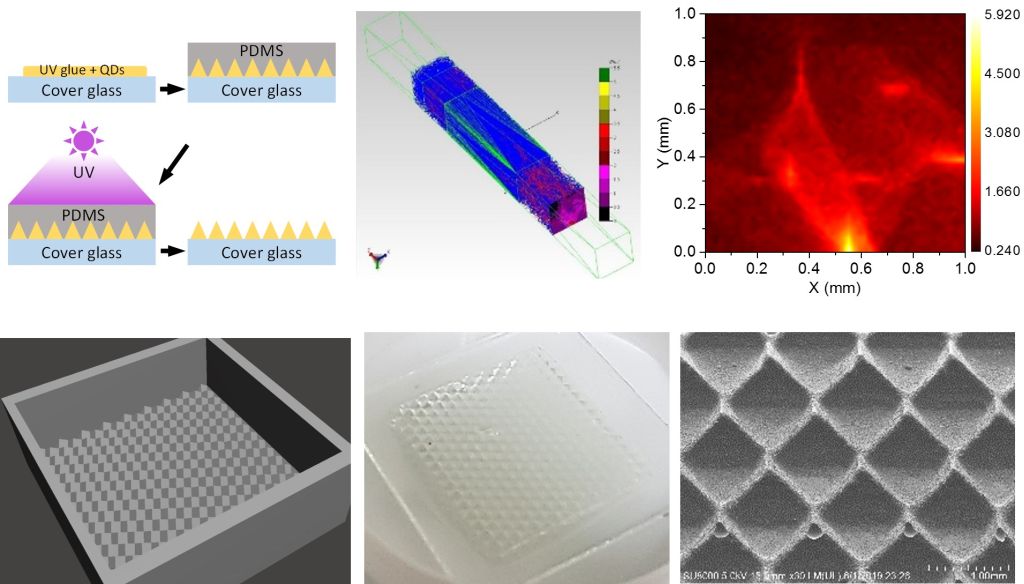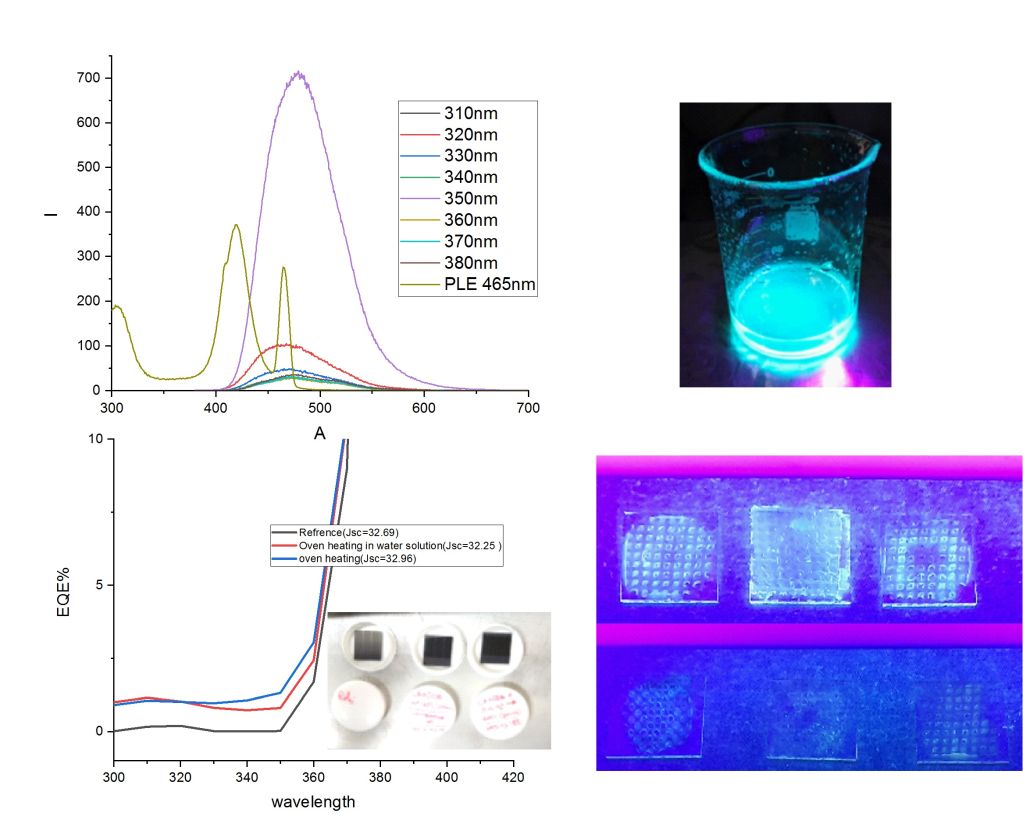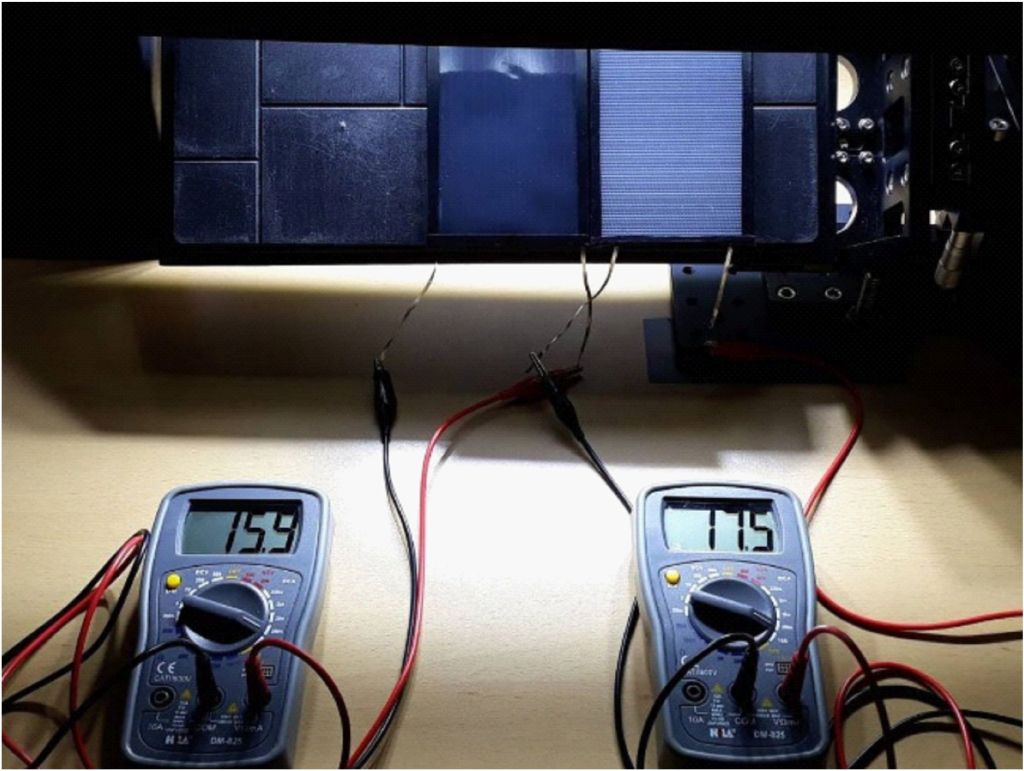| Technical Name | 3D printed, customized antireflective fluorescence polymer films by soft embossing | ||
|---|---|---|---|
| Project Operator | National Tsing Hua University | ||
| Project Host | 闕郁倫 | ||
| Summary | The present invention combines 3D printed molds with a soft embossing process to produce customized antireflective films. We also adjust the periodicity of the structures to concentrate the incident light away from the deadzones. Moreover, we further incorporate quantum dots into the films to convert incident light below 340 nm into the wavelength range with higher transmittance and quantum efficiency. |
||
| Scientific Breakthrough | The advantages of this process include optical customization of the antireflective (AR) films, avoiding the exposure of the dead zones (DZ), and using quantum dots (QD) to extend the EQE bandwidth. So far, only DSM has reported using AR films with cube corners, resulting in a 2.5% Isc gain, but it does not use customized molds to avoid the exposure of the DZs, and it does not contain QDs. |
||
| Industrial Applicability | The antireflective (AR) films in this process can be EVA, POE, UV glue or Teflon AF, depending on the life span of the modules and their application. The AR films can be directly applied to the flexible modules during encapsulation and be easily restored or installed onto various surface by the costumers. Niche demand fields including outdoor, BIPV, communication and agriculture can be expected. |
||
| Keyword | photovoltaic embossed glass antireflective structure 3D printing quantum dot BIPV PDMS ABS optical optimization dead zone | ||
- s9931608@m99.nthu.edu.tw
other people also saw







